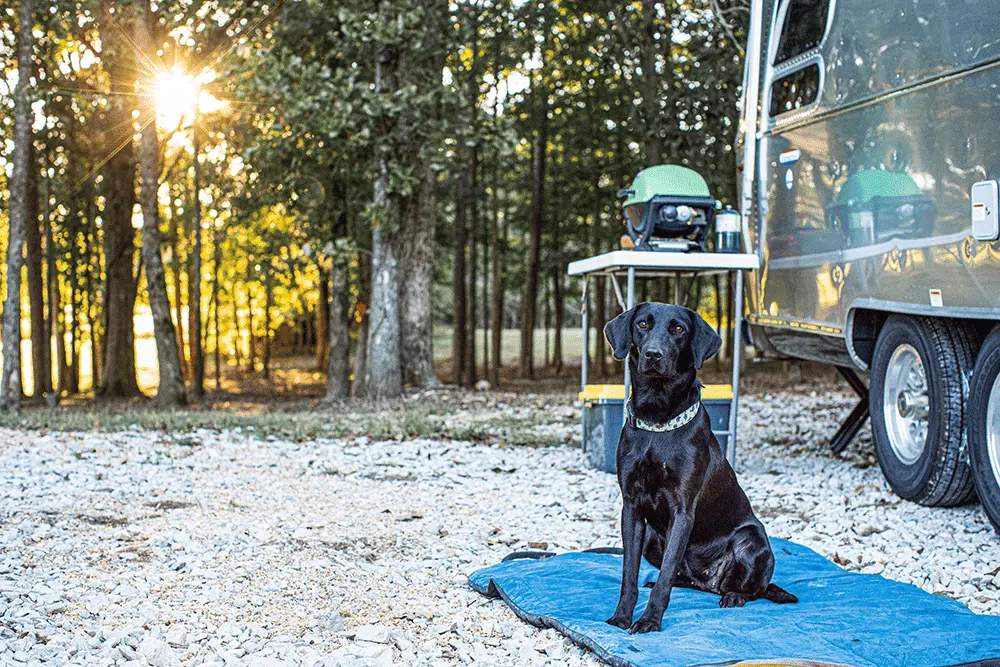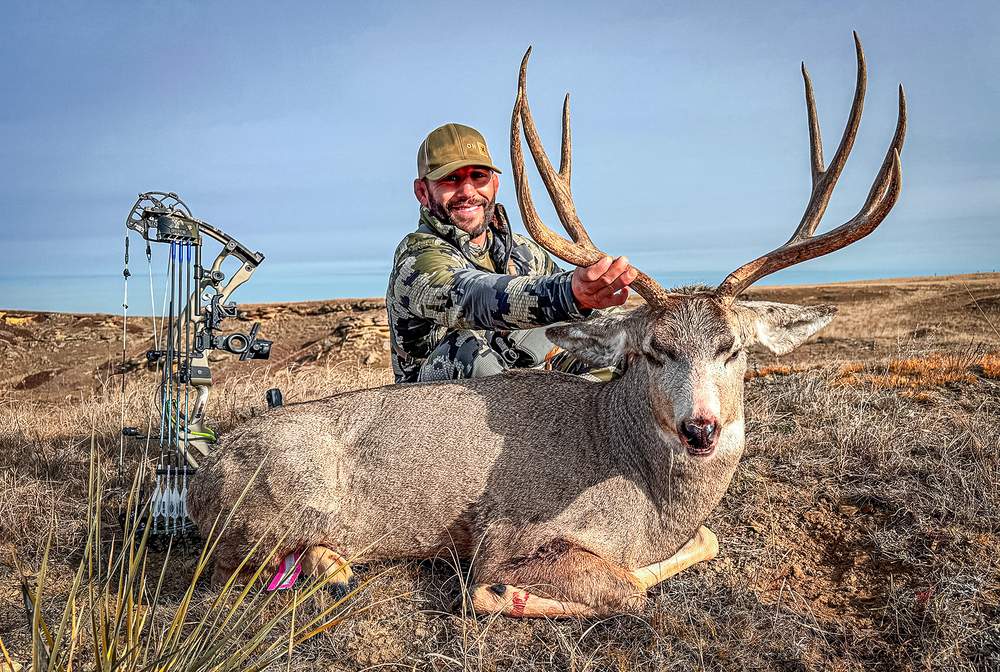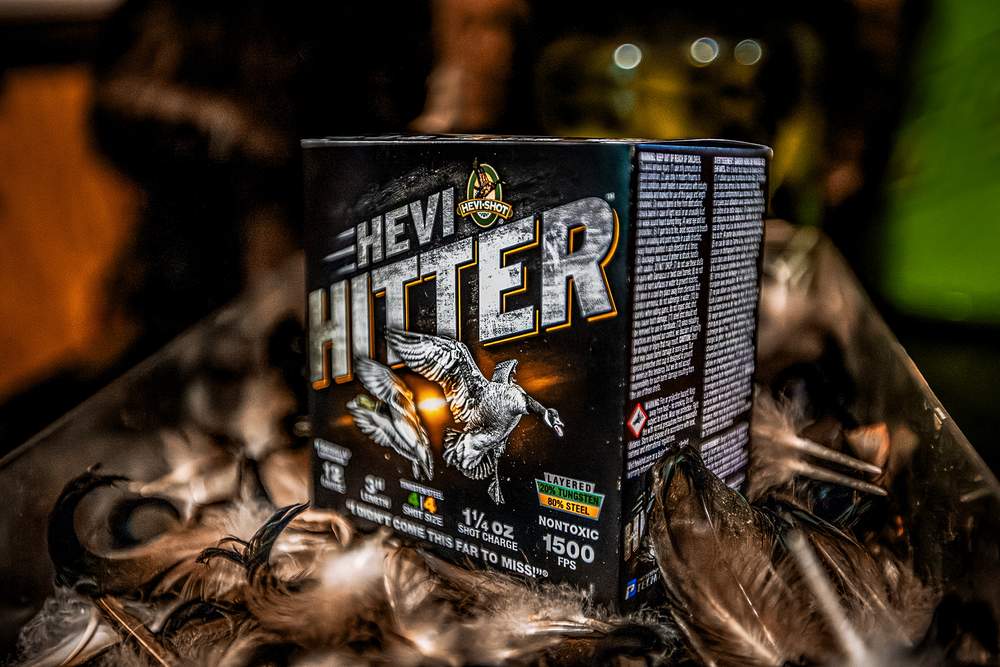Many avid wingshooters and overland adventurers would never consider departing for a destination without the company of their canine partner. A good dog complements the entire hunting, outdoor, and travel experience. Traveling with a hunting dog is what the clients live for at Wildrose Kennels.
Traveling with a hunting dog, although delightful, does present an expanded list of preparations necessary to ensure a safe, problem-free journey.
As sporting dog enthusiasts will attest, whether their passion is wing shooting or family outdoor adventure activities with their canine companions, nothing outside of severe weather can disrupt the experience more than an uncontrollable, noisy, annoying dog that is undisciplined and unsocialized.
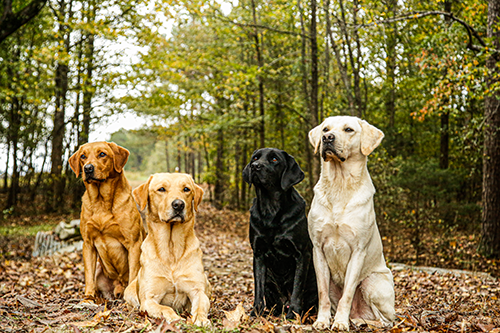
Dogs that are in the company of their less-than-demanding owners prove to be an annoyance on the hunt with disruptive behaviors ranging from unsteadiness to the shot to the hunting dog out of their handler’s control afield.
What about the adventure canine companion that will not stay still in the boat, rambles around the campsite searching for handouts, jumps on people to greet them, is unresponsive to the handler’s commands to return after disappearing from sight on an independent frolic, or the dog that bolts away in pursuit of wildlife? The list of annoying behaviors of an untrained, unmanageable dog that can arise on a wing shoot or an overland journey is long but totally avoidable.
Hunting dogs with proper training and appropriate pre-outing preparation by their partners can result in complementing the enjoyment of the adventure rather than creating misery in the outdoor experience.
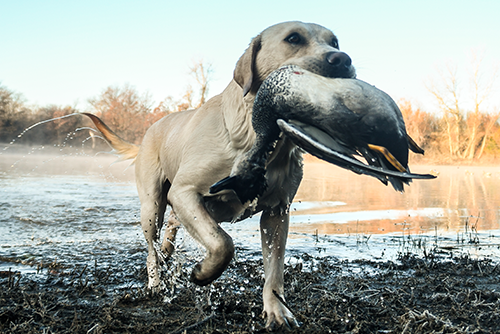
Our first consideration should be the level of our dog’s basic training. Are the appropriate skills and social behaviors well entrenched before the journey begins?
Core Skills:
Heel Work
On lead, the dog does not pull the handler about. Off lead the dog stays to the side of his partner.
Solid “Place” Behavior
The dog will stay put on the designated mat or bed no matter the distraction, outside or inside, until released by the handler.
Recall
Can the traveling companion be stopped on command off-lead and immediately return when called?
Extinguishing Any Detected Fear Factors
Has the dog been desensitized to sudden noises or unfamiliar situations that could be encountered on the planned hunt or trail: moving vehicles, gunfire, wildlife, other dogs, noisy watercraft, small aircraft, or ATVs? For waterfowlers, the acclimation could include water stands, dog hides, and duck blinds.
Pre-Trip Vehicle Rides
For beginners, short vehicle rides are advisable to introduce the dog to the motion of the vehicle and prepare the dog for the expected behaviors when traveling.
Basically, the first time your hunting dog encounters a new situation should not be at sunrise as the journey or outside adventure begins.
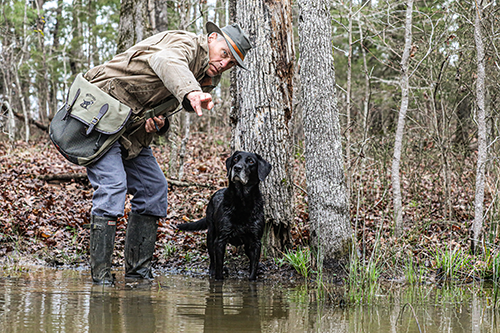
Preparation For The Journey
When the time to travel is near, it is best to get the dog(s) on a set schedule for once-a-day feeding at the end of the day, close to the time partners anticipate stopping for the evening. It’s never a good idea to subject a dog, especially a young one, to the unnatural motions of a vehicle, boat, or aircraft on a full stomach.
It’s best for digestion and less risk of motion sickness to feed in the evening when stopped for the day. Additionally, in-depth research on the sporting dog has determined that the optimum time to feed an active dog is 30 to 45 minutes after exercise. For the dog, that will usually be at the trail’s end in the evening and the end of a day’s hunt for the wingshooting companion. Feeding kibble before activity does little to complement the endurance or field performance of a canine and actually may irritate the digestive system. Feeding late in the afternoon allows plenty of time for airing before retiring for the evening. Of course, pack plenty of food in a water-sealed container because switching brands of food mid-trip may result in stomach disorders. Floating the food with a small amount of water is a good practice to encourage proper hydration.
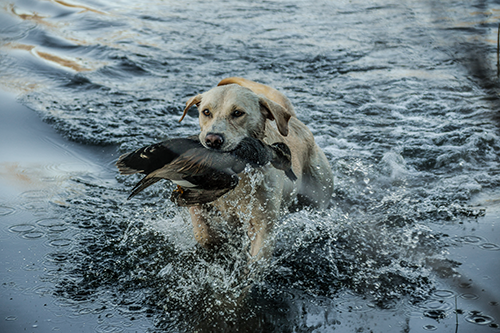
Bring a couple of gallons of fresh water from home, a precaution that may further keep the dog’s system stable rather than switching to an unfamiliar source of water. Offer fresh water periodically during the road trip and when afield. The less a dog’s normal routine is varied the better.
Further, it is very important to take fresh water for the dog as well as for yourself when hunting or on an adventure outing. Flooded fields and streams often contain residue from agricultural pesticides and herbicides that definitely should be avoided as a water source for the dog. Ponds can become stagnate hosting contaminates including fungus and algae. Even the high mountain streams on warm days likely contain giardia. The solution is to take fresh water after afield for every outing.
Safety
A dog’s safety is the next concern. Where will the dog ride on the trip? A hunting dog lounging on the back seat of a vehicle unrestrained is a nice and compatible notion but one that could prove traumatic upon impact in a collision. Your canine friend may become a dangerous flying object: a danger to the driver, passengers, and obviously, the dog.
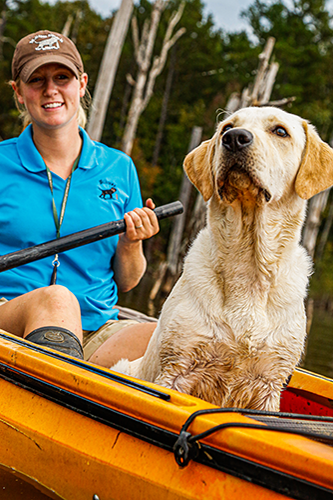
Best Options Include:
1- Dog trailer (multiple dogs traveling)
2- Dog box (rear of the truck or SUV)
3- Portable kennel (inside the vehicle or secured in the rear of a truck)
4- A seat belt restraint attached to a dog harness.
The crate option offers great flexibility for storage and utilization. When selecting a crate, our most important consideration is impact resistance should an accident occur.
1- Solid, one-piece construction—two-piece crates will break apart on impact
2- Strong door latch construction
3- The insulation factor of the construction materials
4- Attachments to secure the crate to the vehicle to prevent movement
When choosing crate size, think about where the crate will be placed in the vehicle, RV, or private aircraft when traveling. The rear of an open pick-up truck presents no problem if the crate is securely anchored and lockable. When the kennel must fit under a small pickup camper shell, in the RV, rear seat of a vehicle, or the back of an SUV, size matters. Make sure to make appropriate measurements before the purchase.
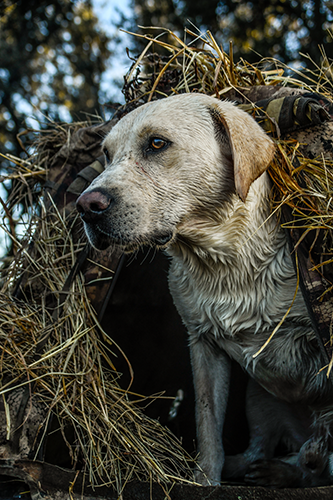
Next, consider the size of the dog. The crate dimensions should allow ample room for the dog to sit up, turn around, and lie down with reasonable extension of the body and legs. It is undesirable to have a crate that is too large or too spacious. In the unfortunate event of a vehicle accident, the appropriately sized kennel affords protection; too large and the animal may be slammed about inside the crate’s interior causing injury.
Insulated crate covers offer protection from wind, rain, and snow when exposed to weather. Select waterproof covers that have heavy, durable zippers and handles to allow the crate to be secured.
For extended travel, a soft crate pad inside the crate is a good idea to absorb some of the road shock. In summer, fans are available that can be plugged directly into the vehicle’s power source or are battery operated that attach to the crate door. This is a great option for those who have their dog inside an enclosed vehicle, rear of an SUV, pickup camper shell, or RV.
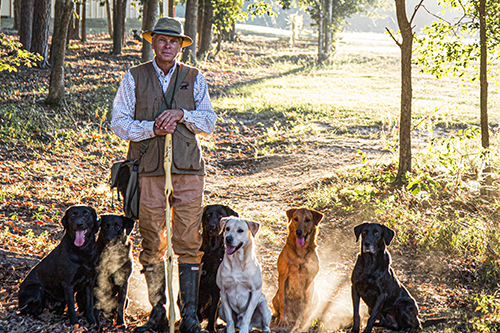
A dog should never be left unattended in a closed vehicle or RV in hot weather. Heat stroke is a deadly issue in warm weather. The outside temperature of 85 degrees can result in an enclosed vehicle’s temperature rising to 104 degrees in 10 minutes and 119 degrees in 30 minutes! Do not trust leaving the vehicle running with the air conditioner on. The vehicle’s engines can overheat causing the AC to fail, or the motor simply stops resulting in a quick disaster.
Canines conditioned from puppyhood to adopt their crates as a place of safety and relaxation love their kennels. It becomes their cave of security. Never use a crate as a means of punishment, and avoid allowing anything to occur that would make the pup/dog uncomfortable or fearful of a crate. It’s a happy place.
Wildrose Kennels Sporting Dog Prelaunch Checklist
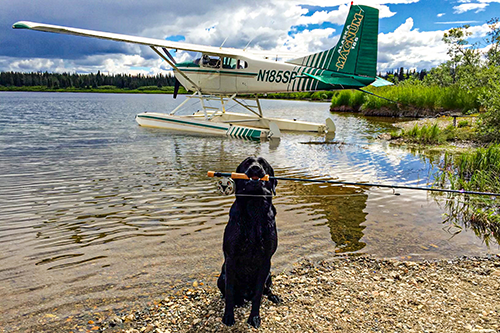
Go prepared. Other important preparations for traveling with a hunting dog that may prove beneficial:
1- The dog’s “place” mat to be used when outside the portable kennel or trailer
2- Leash
3- Brightly colored collar with the contact information and rabies information should the dog become lost
4- The dog is microchipped for permanent identification
5- K-9 first aid kit
6- A copy of the dog’s most current vaccination records
7- Food and water bowls
8- Tie-out cable, stake and flat collar
9- A listing of veterinary contacts along your route and at the final destination
10- “Poop bags.” Be a responsible owner. Clean up after your dog
11- Insect, flea, and tick repellent (seasonal)
12- Canine shampoo and towel for a necessary field bath
To all wingshooters and adventurers traveling with a hunting dog, may you have safe journeys as you live your passion.
For more information, uklabs.com.
